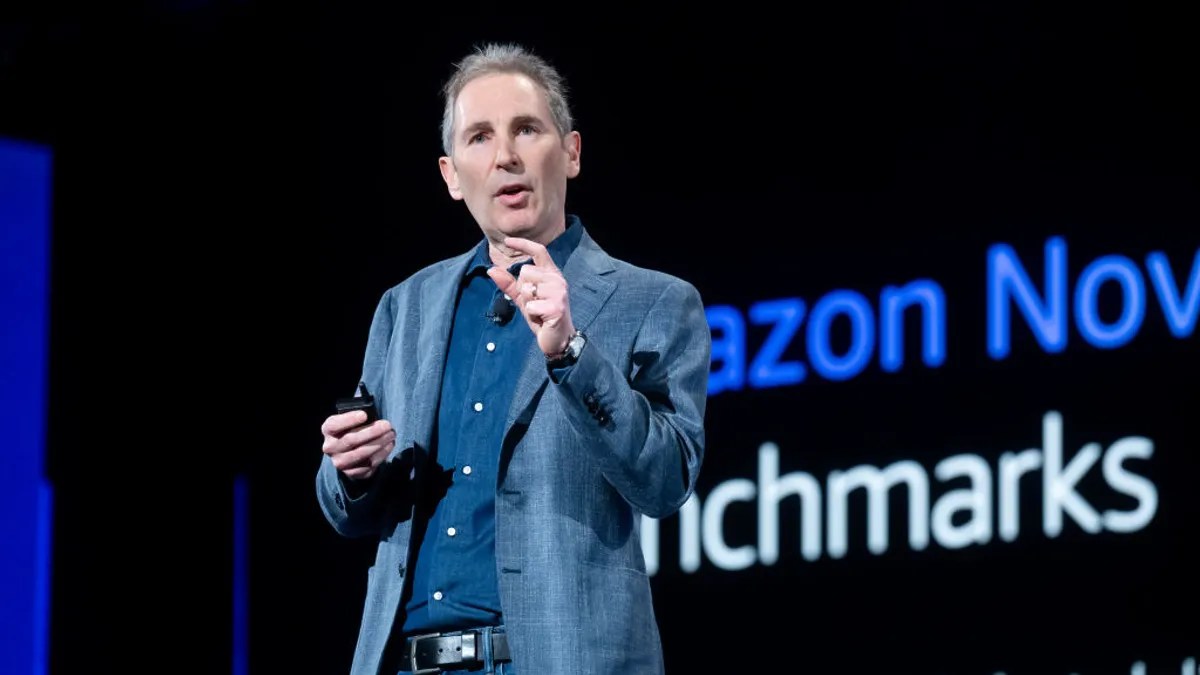In 2024, enterprise technology experienced major changes in little time.
Spinning up generative AI tools took up much attention from business leaders, putting data and cloud infrastructure under more pressure than years past. Now, as 2025 nears, technology leaders are gearing up for more disruption and organizational demands.
In 2025, executives will increase their reliance on software vendors as they grapple with the rise of an agentic workforce and an overall acceleration of AI maturity. Hyperscalers will continue to invest in building out infrastructure to support rising demand, and CIOs will get more picky about what problems they solve with generative AI.
Here are six predictions that analysts expect will shape 2025 for enterprise technology leaders:
1. Software vendors double down on consumption-based pricing
Next year, Forrester expects a sharp rise in usage-based pricing, driven in large part by enterprise consumption of data and AI services. Consumption pricing will expand to encompass 10% of enterprise software costs, the analyst firm predicts.
“We want to distinguish the consumption-based from subscription-based,” said Liz Herbert, who previously served as VP and principal analyst at Forrester.
Rather than paying for a specific number of users or seats — a common vendor pricing model — customers will pay for software usage as they consume it.
“You can prepay for a set number of credits and get a discount proportional to the size of the purchase, or you can just let the meter run similarly to the way cloud computing is sold right now,” Herbert said.
2. CIOs will be more selective about generative AI use cases next year
Providers put forth myriad generative AI use cases this year, proposing multiple applications for the technology to enterprise customers. In 2025, CIOs will be more selective about where they apply the technology, with an eye toward use cases with higher ROI rates.
"I think CIOs are going to start being more selective about what we should be putting generative AI towards, because you have a finite resource pool of people and dollars," said Eric Johnson, CIO at PagerDuty. "Do you want to spend a dollar and get back fifty cents or do you want to spend a dollar and get five dollars of value back?”
3. Enterprises will consolidate IT service vendor contracts with their largest providers
To optimize tech spend and tamp down on app sprawl, companies will look to consolidate IT service procurement with their largest vendors in the coming year, according to Alex Bakker, distinguished analyst at ISG.
“We’re talking about companies that manage tech operations, not sellers of software solutions and hardware,” Bakker said. “These are providers that run your data center, do the maintenance, handle software updates and keep older applications running.”
ISG estimates enterprises spend roughly one-fifth of their IT budgets on service providers. The lion’s share of budgeting goes to just a few large vendors that deliver a broad range of cloud and data modernization services, as well as tailored industry solutions and adoption strategies for emerging technologies like generative AI.
“Enterprises are reaching a point at which additional spend on IT can't deliver incremental value due to the complexity of the existing IT environment,” Bakker said. “If they onboard a new service provider, it would take a year just to show them how the systems are laid out.”
4. Hyperscalers will continue infrastructure buildouts
AWS, Microsoft and Google Cloud will continue to pour billions into data center infrastructure to support AI workloads next year. The hyperscalers expanded their U.S. reach in 2024, with Microsoft planning to add regions in California and create a new region in Georgia, and AWS expanding to 17 local zones, Forrester reported.
“We expect the hyperscaler expansion in the U.S. to continue as they are competing for premium AI workloads that require additional investments," Forrester Principal Analyst Lee Sustar said. "There is no workaround — they will have to spend big, as shown by the Microsoft-Black Rock partnership to raise $30 billion for AI-oriented data centers, with Nvidia and the MGX investment fund as partners."
"At the same time, the hyperscalers must continue to invest in commodity cloud services to retain their market share,” Sustar said.
5. Agentic AI will double the workforce in 2025
As enterprise AI capabilities evolve from prompt-to-response systems into more autonomous platforms, PwC expects executives to manage an expanding workforce, now composed of AI agents — or autonomic AI-based tools — in addition to human workers.
"It's a really interesting point in AI maturation, because it's a compounding effect of intelligence," said Matt Wood, global and U.S. commercial technology and innovation officer at PwC. "The more agents that you add, the more they're able to communicate. It's more of a multiplier than it is today."
6. The maturity of enterprise generative AI strategies will accelerate
Many enterprises took an initial approach to generative AI that favored low-hanging value adds and rather simple execution, but experts expect that to change over the next year.
Applications of the technology that are tailored to specific roles, functions or use cases will proliferate as leaders gain a better understanding of what is needed, how to mitigate risks and apply other lessons learned.
“The maturity with which people are adopting these technologies for the enterprise is going to accelerate,” CrowdStrike CTO Elia Zaitsev said. “We’re continuing to evolve and iterate.”





















